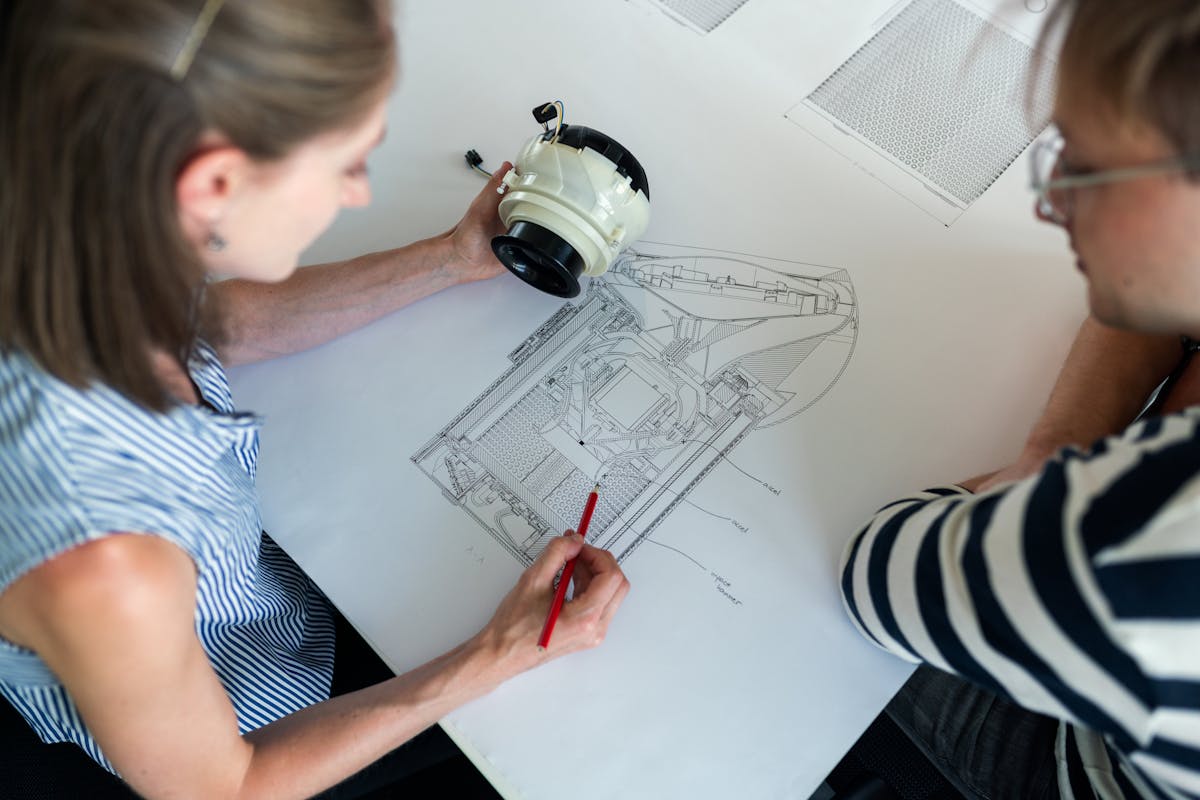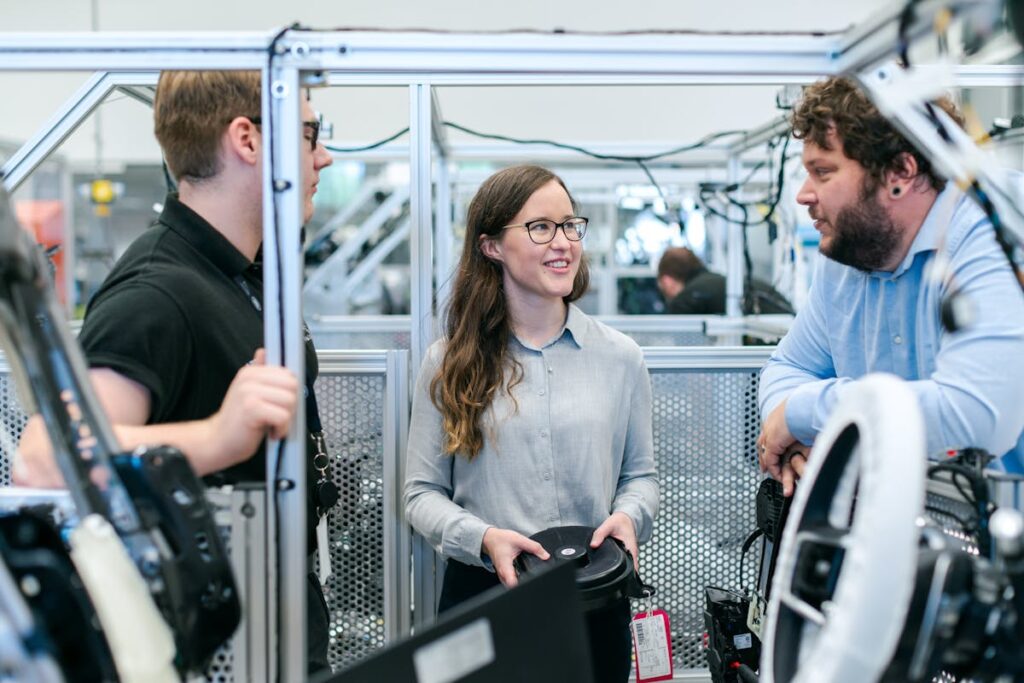The automotive industry’s response to car accidents has been marked by significant technological advancements and strategic design innovations. With a focus on crash-avoidance systems and AI-driven safety enhancements, manufacturers are prioritizing occupant protection and accident prevention. Sophisticated connectivity features and smart vehicle designs are reshaping road safety dynamics. As consumer safety expectations rise, the continuous integration of these technologies becomes essential. The industry’s commitment to reducing accident severity is evident, but what future innovations lie ahead?
Advancements in Crash-Avoidance Technologies
As automotive manufacturers continue to prioritize safety, advancements in crash-avoidance technologies have become increasingly sophisticated, driven by both regulatory pressures and consumer demand. Extensive crash simulations play a pivotal role, allowing engineers to refine systems without real-world risks. By modeling various collision scenarios, these simulations enable the development of technologies such as automatic emergency braking and lane-keeping assistance. Safety legislation further accelerates this evolution, with governments mandating stricter standards and setting deadlines for implementation. For instance, the European New Car Assessment Programme (Euro NCAP) continues to elevate its requirements, pushing automakers to innovate. Consumer confidence hinges on demonstrable improvements, as evidenced by market trends favoring vehicles with advanced safety features. Consequently, a data-centric approach underpins the industry’s ongoing quest for reduced accident rates.
The Role of AI in Enhancing Vehicle Safety
Artificial Intelligence is increasingly pivotal in the automotive industry’s efforts to enhance vehicle safety through predictive crash prevention and autonomous emergency braking systems. Recent studies indicate that AI-driven predictive models can anticipate potential collisions with up to 90% accuracy, allowing vehicles to take preemptive measures to avert accidents. Moreover, autonomous emergency braking, now a standard feature in many vehicles, has been shown to reduce rear-end collisions by nearly 40%, underscoring the efficacy of AI in mitigating accident risks.
Predictive Crash Prevention
While the automotive industry continues to evolve, the integration of artificial intelligence in predictive crash prevention stands out as a transformative development. Utilizing advanced algorithms, AI systems enhance accident forecasting capabilities by analyzing vast datasets, including real-time traffic conditions and driver behavior. These systems perform thorough risk assessments to identify potential collision scenarios before they occur, thereby greatly reducing accident rates. The precision of AI in processing intricate variables such as speed, distance, and environmental factors provides an unprecedented level of safety assurance. Studies indicate a potential reduction in accident occurrences by up to 30%, emphasizing AI’s critical role in preemptive safety measures. This technology not only aids in safeguarding lives but also propels the automotive sector towards a safer, data-driven future.
Autonomous Emergency Braking
Autonomous Emergency Braking (AEB) systems revolutionize vehicle safety by leveraging artificial intelligence to mitigate collision risks. These systems utilize advanced collision detection technologies combined with sophisticated safety algorithms to identify potential threats in real-time. By analyzing data from sensors and cameras, AEB dynamically evaluates the proximity and speed of surrounding objects. Upon detecting an imminent crash, the system autonomously applies brakes to prevent or lessen impact severity. Research indicates that vehicles equipped with AEB experience a significant reduction in rear-end collisions, enhancing overall road safety. The integration of AI-driven safety algorithms guarantees continuous learning and improvement of these systems, adapting to diverse driving conditions. Consequently, AEB is pivotal in advancing automotive safety, offering a proactive approach to accident prevention.
Connectivity: Revolutionizing Road Safety
As connectivity technologies continue to advance, they are playing a pivotal role in enhancing road safety by facilitating real-time data exchange between vehicles, infrastructure, and traffic management systems. Vehicle to vehicle communication enables cars to share critical information instantaneously, such as speed, location, and road conditions, which greatly reduces the likelihood of collisions. In parallel, smart traffic management systems utilize this data to optimize traffic flow and minimize congestion. Studies indicate that these systems can decrease accident rates by up to 30%. Furthermore, the implementation of connected infrastructure, such as adaptive traffic lights and digital signage, further supports proactive safety measures. This interconnected ecosystem not only enhances situational awareness but also fosters a collaborative approach to minimizing road accidents and improving public safety.
Innovations in Vehicle Design for Accident Prevention
Advancements in vehicle design are fundamentally transforming the landscape of accident prevention by integrating cutting-edge technologies with innovative engineering solutions. Emphasis on smart materials is pivotal; these materials enhance vehicle resilience, absorbing impact forces to reduce injury during collisions. Concurrently, ergonomic designs are gaining traction, prioritizing driver and passenger comfort while minimizing the likelihood of fatigue-induced accidents. The implementation of adaptive seat structures and energy-absorbing interiors exemplifies this trend, as they are engineered to conform to human anatomy, offering superior protection. In addition, data-driven analyses indicate that incorporating these innovations leads to a decrease in accident severity rates. As vehicle manufacturers continue to innovate, the fusion of smart materials with ergonomic designs remains central to advancing automotive safety standards.

Collaborating With Regulatory Bodies for Safer Roads
The integration of smart materials and ergonomic designs in vehicle engineering highlights the automotive industry’s commitment to accident prevention. Regulatory collaboration plays a pivotal role in enhancing road safety. Data from the National Highway Traffic Safety Administration (NHTSA) shows that coordinated efforts between car manufacturers and regulatory bodies lead to a 15% reduction in traffic fatalities. By aligning vehicle safety standards with government regulations, the industry guarantees compliance and safety enhancements. Collaborative initiatives, such as Euro NCAP’s safety ratings, drive innovations in passive and active safety technologies. Furthermore, joint research projects aimed at understanding crash dynamics and human behavior contribute to more informed policy-making. Consequently, this synergy between industry and regulators fosters safer roads and elevates public confidence in vehicle safety.
Post-Accident Support Systems for Drivers
Post-accident support systems in the automotive industry are increasingly focusing on immediate emergency response and extensive driver assistance programs. Data indicates that vehicles equipped with automatic crash notification systems can reduce emergency response times by up to 50%, potentially saving lives. Additionally, driver assistance programs, which offer post-crash guidance and support, aim to alleviate the physical and psychological aftermath of accidents, fostering quicker recovery and return to normalcy for drivers.
Immediate Emergency Response
In the wake of a car accident, swift and effective emergency response systems can greatly reduce the severity of injuries and save lives. The automotive industry has focused on enhancing emergency training for first responders and drivers, equipping them with the skills necessary to execute critical accident protocols. Data suggests that well-trained personnel can decrease mortality rates by up to 25% when proper protocols are implemented. Furthermore, advanced in-car systems automatically alert emergency services with precise location data, further expediting response times. Industry analysis indicates that integrating technology with human expertise creates a more robust framework for immediate post-accident interventions. By continuously refining these systems, the automotive sector aims to bolster overall road safety and mitigate the impact of traffic incidents.
Driver Assistance Programs
When considering the aftermath of car accidents, driver assistance programs emerge as pivotal support systems designed to aid individuals in steering through the complex post-accident landscape. These programs often integrate advanced technologies and structured protocols aimed at enhancing driver training and safety awareness. Data indicates that such initiatives considerably reduce the likelihood of repeat incidents by equipping drivers with essential skills and knowledge. Extensive driver training modules focus on understanding vehicular dynamics, emergency maneuvering, and proactive risk assessment. Concurrently, safety awareness campaigns emphasize the importance of adherence to traffic regulations and the benefits of defensive driving techniques. As automotive industries invest in these programs, they contribute to a reduction in accident-related fatalities and foster a culture of safety among drivers.
Streamlining Recovery Processes With Technology
Numerous technological advancements are reshaping the landscape of recovery processes following car accidents, offering both efficiency and effectiveness. Key innovations center on recovery tools embedded with advanced technology integration, enhancing response times and resource allocation. Data from insurance companies indicate a 30% reduction in claim processing time due to digital platforms enabling real-time document submission and assessment. Moreover, telematics systems in vehicles now provide instant collision alerts to emergency services, greatly reducing response times. Additionally, predictive analytics are deployed to anticipate recovery resource needs based on accident data patterns. As these technologies evolve, they promise not only to streamline operations but also to minimize the economic impact of accidents, underscoring a pivotal shift in the automotive industry’s approach to accident recovery.
Consumer Expectations and Safety Feature Integration
As the automotive industry advances, consumer expectations increasingly drive the integration of sophisticated safety features in vehicles. Rising consumer awareness has led to a demand for enhanced safety standards, prompting manufacturers to innovate and include advanced technologies such as automatic emergency braking and lane-keeping assistance. Data suggests that vehicles equipped with such features experience a reduction in accident severity, thereby aligning with regulatory safety standards. Additionally, market analysis reveals that consumers prioritize these features when purchasing vehicles, indicating a shift in preferences towards safety over traditional performance metrics. This trend compels automakers to invest in research and development to meet the evolving expectations, ultimately influencing the competitive landscape. Consequently, safety feature integration becomes a crucial selling point, mirroring consumer demand for security.
The Future of Automotive Safety and Accident Reduction
While technological advancements continue to reshape the automotive industry, the future of automotive safety and accident reduction hinges on the integration of cutting-edge innovations and data-driven strategies. Autonomous vehicles and advanced driver-assistance systems exemplify technological strides, offering real-time analytics to mitigate human error. Understanding accident psychology becomes essential as these technologies evolve, enabling systems to anticipate and react to human behaviors. Behavioral safety, focusing on driver habits and decision-making, plays a pivotal role in designing these systems. Data from connected vehicles provides insights into driving patterns, facilitating tailored interventions. Predictive analytics can foresee risk-prone scenarios, enhancing preventive measures. As these innovations converge, they promise a transformative impact on reducing accident rates, emphasizing precision and proactive safety approaches.
Frequently Asked Questions
How Do Insurance Companies Determine Fault in Car Accidents?
Insurance companies employ fault determination processes using accident reports, witness statements, and police records. Insurance assessments analyze this data to ascertain liability, often utilizing specialized software to evaluate scenarios and assign responsibility based on evidence and policy terms.
What Are the Most Common Causes of Car Accidents?
The most common causes of car accidents include distracted driving and speeding violations. Data shows these behaviors greatly increase collision risk, with distracted driving accounting for over 25% of accidents, and speeding responsible for another 20%.
How Does Weather Impact Accident Rates?
Weather conditions greatly impact accident rates, with seasonal trends indicating higher incidents during adverse weather. Rain, snow, and fog reduce visibility and road traction, leading to increased collisions, particularly in regions unaccustomed to such weather patterns.
What Steps Should I Take Immediately After an Accident?
In the immediate aftermath of a collision, primary actions include ensuring safety, contacting emergency services, and documenting the scene. These first steps post accident are essential for accurate incident reporting and future insurance claims processing.
How Can Drivers Reduce Their Risk of Being in an Accident?
To reduce accident risk, drivers should adopt defensive driving techniques, maintaining safe distances and anticipating others’ actions. Prioritizing distraction awareness by minimizing in-car interruptions, such as mobile device use, substantially lowers collision probabilities, according to traffic safety studies.

